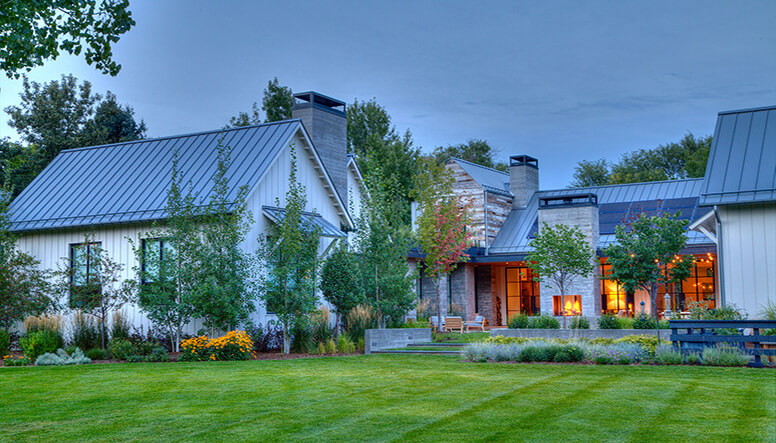Fads in the gardening world tend to be as short-lived as an annual planting of pansies. By the time everyone has caught up to the month’s flavor, it’s often time to dig up what’s spent, replant new specimens, and move on. In some ways, this can be freeing, as it allows one to create a garden that will genuinely make themselves happy, regardless of the latest trends.
However, for others, this can lead to a creative malaise that makes designing any garden seem like a futile endeavor, as whatever can be imagined has likely already been done somewhere else and at a grander scale. And such comparisons between new and long since established gardens is often a recipe for disaster.
After all, when you’re designing your garden, it shouldn’t be just for a single year or season, but instead with an eye toward the future and what your space may look like five, ten, fifteen, even twenty years down the road. Time will play its role in shaping your landscape, which is essentially unpredictable. Taking this sort of long view can be intimidating to the uninitiated initially, but once you can wrap your head around the concept, seeing the big picture and what your landscape truly needs will become much more manageable.
To aid in the planning process and serve as inspiration, we’ve compiled five of the most timeless garden trends for 2022.
Container Gardens
Table of Contents
Short on space but still want to garden? Consider container gardening to help scratch that green thumb itch. Containers can offer a versatile canvas on which the gardener can create a landscape of their choosing. This type of garden can often grow both vegetables and flowers, and the only real limiting factor is the size of the space and the number of containers available. Even in an area as small as a balcony, it is possible to accomplish extraordinary things. Not sure where to begin? The Farmer’s Almanac has some valuable tips to help get any balcony container garden started.
Prairie Style Gardens
One of the most popular styles of gardens today is the prairie-style plantings that are easily recognized by their use of ornamental grasses. Such gardens are great for the visual interest that they can provide year-round and the resilience they can show, even in the face of extreme heat and drought. Start with this style if you don’t have a good track record of keeping your plants alive.
A prairie-style garden consists of primarily native plants depending on where you live. After all, prairie used to cover almost a third of the United States. Moreover, two-thirds of some states, such as Illinois, used to be surrounded by prairie landscapes. According to the National Parks Service, approximately 170 million acres of prairie existed nationwide at one point, a minuscule fraction of which remains today.
Rain Gardens
A rain garden is designed to absorb and retain excess water for those who don’t know. Such gardens are often placed in depressions and filled with low-maintenance plants, usually perennial and native. They can help a garden’s soil better absorb water and be the first step in treating polluted storm runoff. For all of these reasons, a rain garden is a tremendous ecological feature for any garden and can even help relieve issues such as basement flooding.
Pollinator Gardens
Unless you’ve been living under a rock, you’ve likely already heard about the devastation that is afflicting our local bee populations and the horrible impacts it may have on our overarching ecological well-being. And if you’d like to do something to help, consider adding some pollinating plants to your landscaping plan.
These plants are often visually striking, but they also will attract a variety of sought-after creatures such as butterflies, bumblebees, and hummingbirds. The most effective plants for your area will almost always be native, which often means they will have the added benefit of being lower maintenance in general.
Kitchen Gardens
The last garden that we will look at is the humble kitchen garden. Kitchen gardens do precisely as the name would suggest – supplement your kitchen supplies with various fresh herbs, vegetables, and fruits (though the latter’s success is highly climate dependent). This mixture of edibles and aromatics makes a kitchen garden a wonderful place to hang out even when one isn’t cooking.
A kitchen garden can easily be put together on a weekend if you have the space and time.
Partnering with a local nursery can help you pick suitable plantings for your season and locality. For example, a nursery & greenhouse in Berlin, PA, should be able to give expert advice on what plantings to undertake. In addition, they will often have plants for sale that have already been habituated to the local climate – a significant advantage of mail-order providers.
Whatever Garden Trend You Choose, Make It Your Own
There you have it, five hot landscaping trends in 2022 that will stand the test of time. However, as you’ve hopefully come to agree, much more important than the latest gardening trends is what interests you about your garden. At the end of the day, you’ll be the one who has to spend the time watering and weeding.

